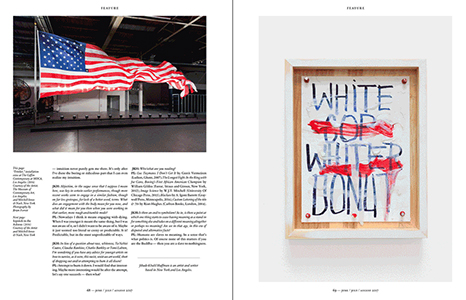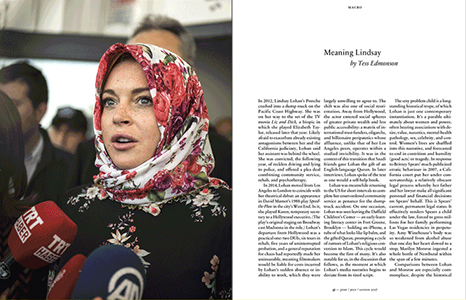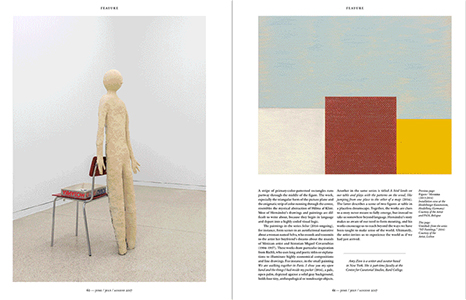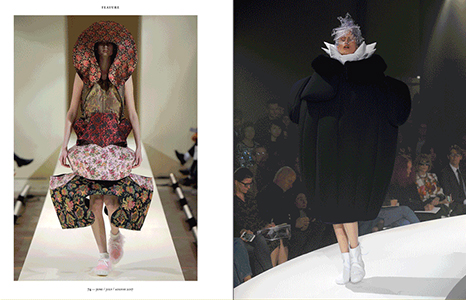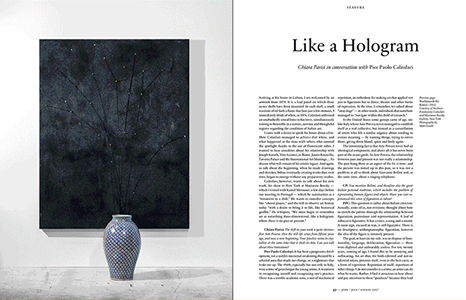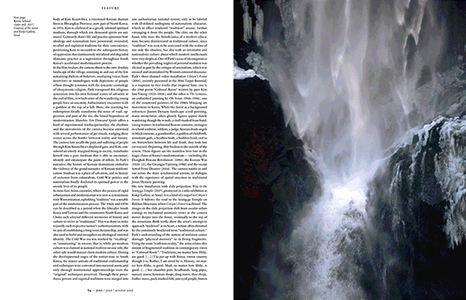
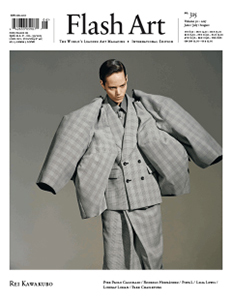
Having founded her label Comme des Garçons in 1969, Rei Kawakubo is only the second living designer (after Yves Saint Laurent) to be honored with a solo show at the Metropolitan Museum of Art. According to Jeremy Lewis, “What makes [her] clothes radical is that although they are not always recognizable as clothes, they were always meant to be worn.” Kawakubo's deconstructed style—raw and cerebral—seems to take clothing outside of itself and to reposition it in a contemporary space nonetheless rooted within her own
Japanese cultural tradition. She is the cover artist for this Summer 2017 edition.
A season marked by global political uncertainty has foregrounded artist Pope.L's long concern with just that: uncertainty, unknowability, misrecognition. In
Whispering Campaign at Documenta 14, a fragmentary narrative is diffused throughout Athens twenty-four hours a day—as it will throughout Kassel—via city-wide speakers and wandering, whispering performers. In his conversation with Jibade-Khalil Huffman, Pope.L relates how he sees “
language as a means of duration, and time as a way of making meaning.”
Flash Art #315 comes with two different covers (Rei Kawakubo and
Pier Paolo Calzolari), distributed randomly.
Flash Art is a contemporary art and culture magazine founded in 1967. Within a decade, it became an indispensable point of reference for artists, critics, collectors, galleries, and institutions. In 2020, Flash Art became a quarterly publication, at the same time increasing its trim size and updating its graphic identity. The magazine offers a fresh perspective on the visual arts, covering a range of transdisciplinary approaches and fostering in-depth analyses of artist practices and new cultural directions. Today, Flash Art remains required reading for all who navigate the international art scene.
Flash Art is known for it covers featuring artists who subsequently become leading figures in the art world. The magazine includes photoshoots, productions, critical essays, monographic profiles, conversations with emerging and established artists, and a range of ongoing and thematic columns that change every few years. The long history of the magazine is also highlighted by pivotal texts from the archive that are included in the publication time to time. Finally, every issue offers a highly curated selection of the best institutional exhibitions on the global scene.



